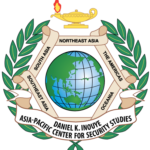By: Abdulla Phairoosch (CCM 2011-1)
COVID-19, the disease caused by a “novel” strain of coronavirus family, is wreaking havoc across the globe. Consequently, many countries have elevated the COVID-19 pandemic from a public health issue to a national security issue. Will this alleviate the risk, is a question that has no definitive answer as of now, though many countries, like Japan and the Maldives, are battling the threat through the provisions of public health protection laws. Nevertheless, national borders have become more prominent in the discussion in mitigating the risk or ‘flattening the curve’. One of the first approaches to crisis management adopted by many countries was restricting inflow of foreigners or announcing travel bans.
Today, the world is more interconnected than ever before. Travel restrictions (and bans) has affected global economy and global connectivity as the supply chains are disrupted. Many industries rely on components or raw materials from a supplier in another country. Hence, travel restrictions and flow of goods across countries is disrupting many industries, including those that support critical infrastructure, medical supplies, and personal hygiene.
Over 80 percent of medicines and vaccines either originate from China and India or use components manufactured in either of these countries. On 3 March 2020, India – world’s biggest supplier of generic drugs – had decided to restrict the export of 26 pharmaceutical ingredients, including Paracetamol, one of the world’s most widely used pain-relieving drugs. This decision came at a time when many manufacturers in China reduced their output. With the increase of domestic need in treating their infected populations and a global disconnection of transport, most countries risk suffering from shortage of medicines and medical equipment.
Governments are forced to reduce their recurrent expenditure and divert resources and funds to the response and recovery effort, while subsidizing essential services. Hence, the whole exercise increases government spending, even if OECD has revised global rate down from 2.9 percent to 2.4 percent (slowest since global financial crisis).
Regional alliances could break due to the inability to support suffering members of the block, as seen in the European Union. Though the 27 regional countries come together is crises, they could not support Italy. China is filling that gap sending a shipment of medical equipment, drugs, and a team of medical experts on COVID-19. After the crisis, Italy could revise its alliance strategy of foreign relations. Similar trends could emerge in the rest of the world, especially in Africa. India has managed to grasped the alliance of South Asian countries SAARC.
At a time of intense competition among major powers to bring smaller and weaker countries under their strategic fold, the pandemic is attracting attention on realism in international engagement (security).
Published: March 23, 2020
Category: Crisis Updates from the Region
Volume:
Author:





